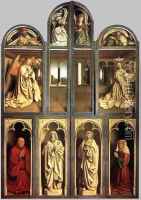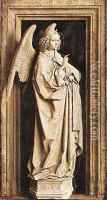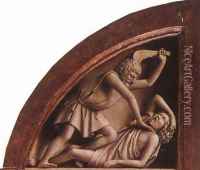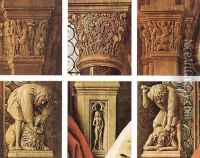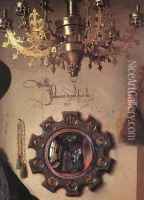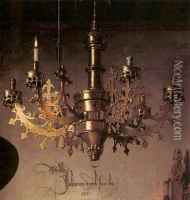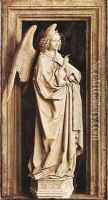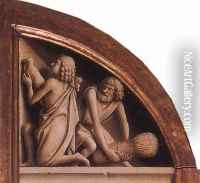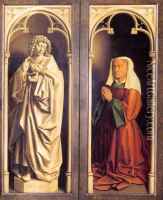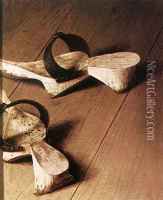Jan Van Eyck Paintings
Jan van Eyck was a Flemish painter who is one of the most prominent figures of Early Netherlandish painting and one of the most significant Northern Renaissance artists of the 15th century. His exact birthplace and year are not known, but he was born around 1390 in the Bishopric of Liège, which is now modern-day Belgium. Van Eyck was an early adopter of oil-based paints, and he is renowned for his meticulous attention to detail and his ability to create depth and realism through layering and glazing techniques.
Van Eyck served as a court painter to John of Bavaria, Count of Holland, from 1422 to 1424 and later to Philip the Good, Duke of Burgundy, from 1425 until his death in 1441. In this capacity, he received commissions for portraits, as well as religious and secular paintings. He traveled within Europe for various diplomatic missions, which exposed him to different artistic influences and techniques.
One of his most famous works is the 'Ghent Altarpiece' (also known as 'The Adoration of the Mystic Lamb'), completed in 1432, which he collaborated on with his brother Hubert van Eyck. The altarpiece is renowned for its intricate detail and the use of light to create an almost tangible sense of presence in the figures.
Another notable work is the 'Arnolfini Portrait' (1434), which depicts the merchant Giovanni di Nicolao Arnolfini and his wife in their home in Bruges. This painting is celebrated for its symbolism, intricate detail, and the innovative use of a mirror to reflect the space behind the artist, including what is believed to be a self-portrait of van Eyck himself.
Jan van Eyck's contribution to art history extends beyond his paintings. He is credited with the development of a more naturalistic approach to painting, moving away from the more rigid and stylized forms that were prevalent in the Middle Ages. His techniques influenced a generation of Northern European artists and laid the groundwork for the development of Renaissance art in the region. Van Eyck's work was characterized by a high degree of observation and his skill in manipulating light and texture to achieve an almost photographic realism in his paintings. His legacy lives on as a master of Early Netherlandish painting, and his works continue to be studied for their technical innovation and complex iconography.
